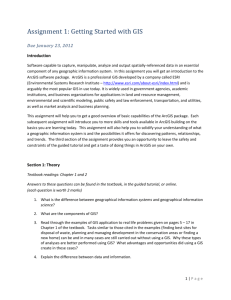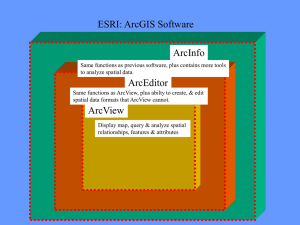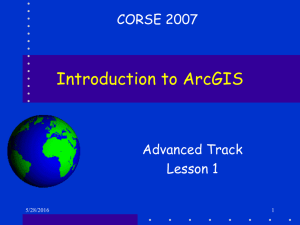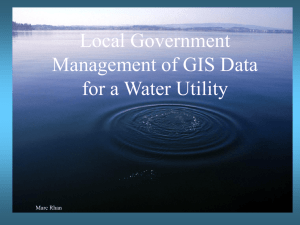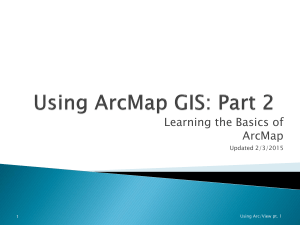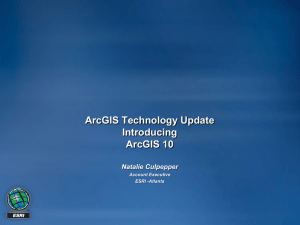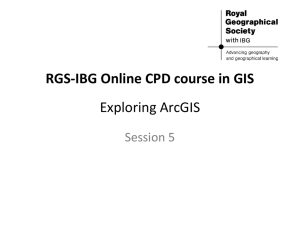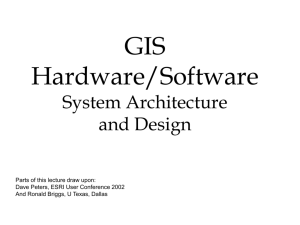GIS, Definition
advertisement
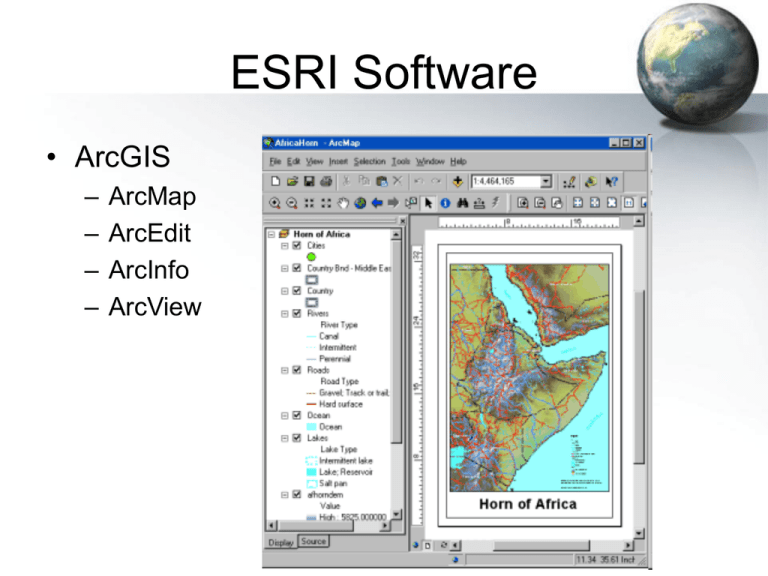
ESRI Software • ArcGIS – – – – ArcMap ArcEdit ArcInfo ArcView ESRI Software • ArcGIS – – – – ArcMap ArcEdit ArcInfo ArcView ESRI Software • ArcGIS – – – – ArcMap ArcEdit ArcInfo ArcView • ArcScene http://www.youtube.com/watch?v=3VyduOMVZCY ESRI Software • ArcGIS – – – – ArcMap ArcEdit ArcInfo ArcView • ArcScene • ArcCatalog ESRI Software • ArcGIS – – – – ArcMap ArcEdit ArcInfo ArcView • ArcScene • ArcCatalog • ArcToolbox ESRI Software • ArcGIS – – – – • • • • ArcMap ArcEdit ArcInfo ArcView ArcScene ArcCatalog ArcToolbox ArcPad Extensions • 3D Analyst • Spatial Analyst • Hawthe’s Tools GIS, Definition • GIS is a system of hardware and software used for storage, retrieval, mapping, and analysis of geographic data, which is geographically referenced to a map projection in an earth coordinate system. • GIS is a special-purpose digital database in which a common spatial coordinate system is the primary means of reference. • GIS is a facility for preparing, presenting, and interpreting facts that pertain to the surface of the earth. • GIS is an information system that is designed to work with data referenced by spatial or geographic coordinates. • GIS is "an organized collection of computer hardware, software, geographic data, and personnel designed to efficiently capture, store, update, manipulate, analyze, and display all forms of geographically referenced information." • A GIS is a database mixed with a map. Types of Data • Vector – Points, Lines, Polygons Types of Data • Vector – Points, Lines, Polygons Attributes Types of Data • Vector – Points, Lines, Polygons Topology (how different features relate to each other) Types of Data • Vector File Types – Shapefiles – Geodatabase Types of Data • Raster Types of Data • Raster Types of Data • Raster – – – – – GRID File ERDAS Imagine GeoTIFF, GeoJPEG MrSID Geodatabase A Digital Elevation Model
